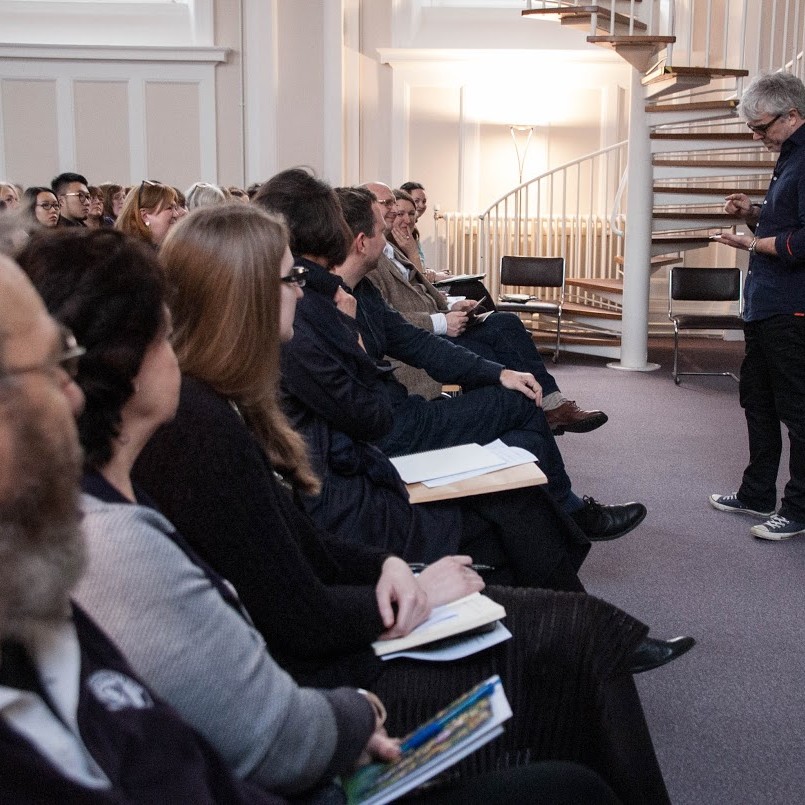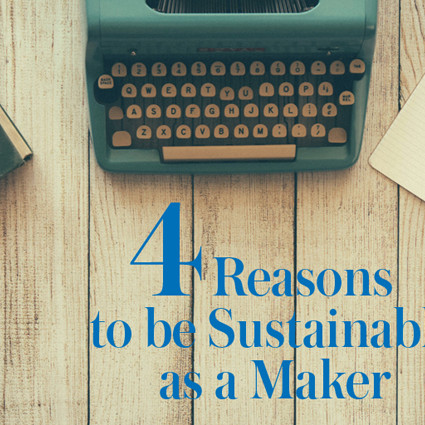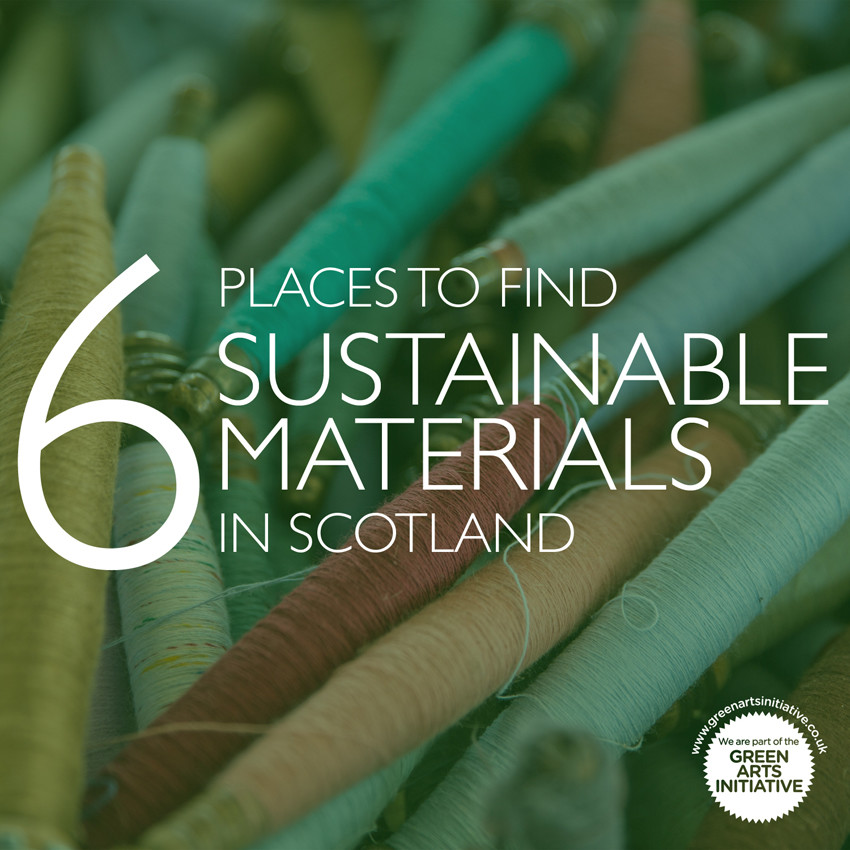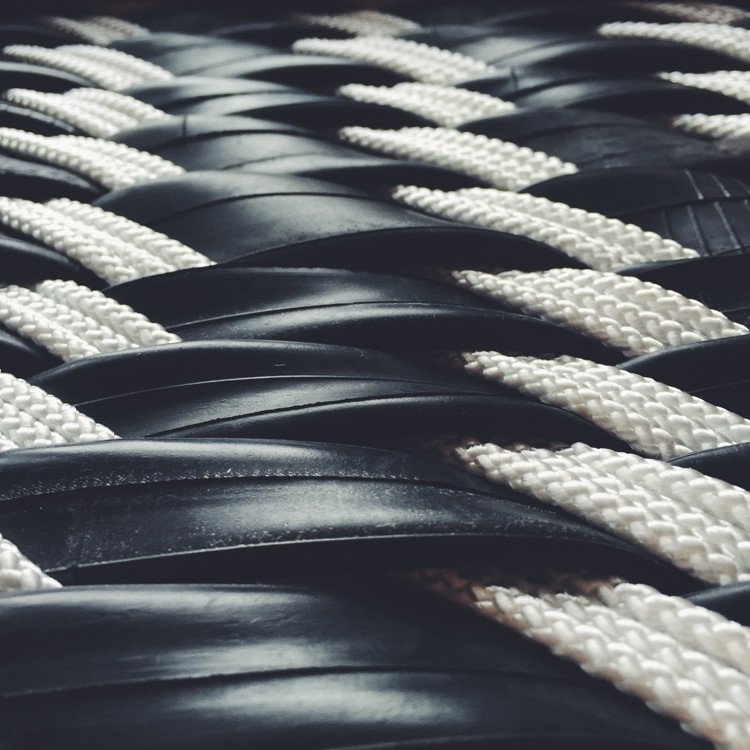This post is part of our 2017/18 Make It Green series, for the Green Crafts Initiative that champions and promotes environmentally sustainable craft practices. In this series by Craft Scotland and Creative Carbon Scotland, you will hear inspiring maker’s stories as well as useful advice on how you can contribute to a greener craft sector.
"I can truly say that I ‘own’ the piece and its provenance" - Pieter van der Werf
For makers, the environmental impact of your work begins with sourcing. Our latest Make It Green interview with Pieter van der Werf highlighted just how important it is to understand the origin of the raw materials and the processes they go through to make them usable. Choosing more sustainable materials, and working with more responsible suppliers, is one of the biggest ways any maker can improve the sustainability of their practice.
There is a worry that sourcing from more sustainable suppliers can incur a higher financial cost. Plus, you will spend valuable time researching and experimenting with a new supplier. To overcome these challenges, makers can come together to form a buying collective to work with suppliers to leverage lower prices and benefit from savings for bulk purchasing. The result? Materials that have a higher ethical or environmental standard.
Before, we get into the tips for how to set up a buying collective. Here's our handy guide to finding an environmental supplier.

Looking for a Sustainable Craft Supplier? Check these 5 things.
So where to start? There are lots of sustainability considerations to explore if you are just starting out on your green journey. We recommend starting with the areas that relate to your practice the most and where your personal interests lie.
For ceramics, you could consider the availability of low environmental impact clay. Whilst for jewellery, you could look into whether or not the mined precious stones are certified as sourced from non-conflict areas.
Top tip – to find this information online, start by looking at your suppliers About Us section on their website, usually in their footer.
1. What's your suppliers' environmental policy?
- Does your supplier have a positive stance on sustainability?
- Do they have a policy on their aims and values in this area?
- Can you ask them about what they are doing to reduce their impact?
2. Does your supplier source locally and/or source following seasonality?
- Do they source in Scotland/the UK?
- Can they source particular products in particular seasons?
3. Has your supplier considered the toxicity of its materials?
- Do they have a policy for controlling toxic waste created from their production processes?
4. What is the social impact of your suppliers' manufacturing?
- Do they support their local community?
- Are they a social enterprise?
- Are they a Living Wage employer?
- Are their workers treated fairly?
5. Does your supplier offer Carbon Reduction Initiatives?
- Do they offer carbon-neutral delivery or something similar?
Now you've identified which green supplier you want to go with, look out for part two that will help you form a buying collective to widen your access to materials and bring down costs.
Join the conversation. Got more tips about sourcing sustainable raw materials? Tweet us @craftscotland and use the hashtag #greencrafts.
Ready to start exploring how to make your practice greener? Join the Green Craft's Initiative today.

Veronique AA Lapeyre
Read More
-
Full details→

Make It Green Sustainable textile making with Pieter van der Werf
We've been talking to textile maker Pieter van der Werf about his environmentally responsible studio practice as part of our Make it Green series.
14 Mar 2018
-
Full details→

Make It Green Ethical tips for jewellers
The Incorporation of Goldsmiths has been up to great adventures in the field of ethical jewellery and sustainability. We hear about their recent ethical jewellery symposium and get some key…
17 Feb 2017
-
Full details→

Make It Green 4 Reasons To Consider Sustainability As A Maker
Nature benefits, and so does your business. Our Make It Green series outlines all the benefits of embracing sustainability.
21 Aug 2016
-
Full details→

Make It Green Six places to find sustainable materials in Scotland
Usually the first step in the sustainable journey, maker’s start looking at sourcing their materials from renewable and/or local sources. This can mean recycled materials, reusing materials or using found…
19 Jul 2016
-
Full details→

Make It Green A Creative Response to the Environmental Crisis
Being authentically green is good for you, the earth and builds fans. Hear Andy Stirling Robertson's thoughts on going against the grain and wholeheartedly embracing green making.
28 Jun 2016
-
Full details→
![Sustainable textile making with Pieter van der Werf]()
Make It Green Sustainable textile making with Pieter van der Werf
We've been talking to textile maker Pieter van der Werf about his environmentally responsible studio practice as part of our Make it Green series.
14 Mar 2018
-
Full details→
![Ethical tips for jewellers]()
Make It Green Ethical tips for jewellers
The Incorporation of Goldsmiths has been up to great adventures in the field of ethical jewellery and sustainability. We hear about their recent ethical jewellery symposium and get some key…
17 Feb 2017
-
Full details→
![4 Reasons To Consider Sustainability As A Maker]()
Make It Green 4 Reasons To Consider Sustainability As A Maker
Nature benefits, and so does your business. Our Make It Green series outlines all the benefits of embracing sustainability.
21 Aug 2016
-
Full details→
![Six places to find sustainable materials in Scotland]()
Make It Green Six places to find sustainable materials in Scotland
Usually the first step in the sustainable journey, maker’s start looking at sourcing their materials from renewable and/or local sources. This can mean recycled materials, reusing materials or using found…
19 Jul 2016
-
Full details→
![A Creative Response to the Environmental Crisis]()
Make It Green A Creative Response to the Environmental Crisis
Being authentically green is good for you, the earth and builds fans. Hear Andy Stirling Robertson's thoughts on going against the grain and wholeheartedly embracing green making.
28 Jun 2016
